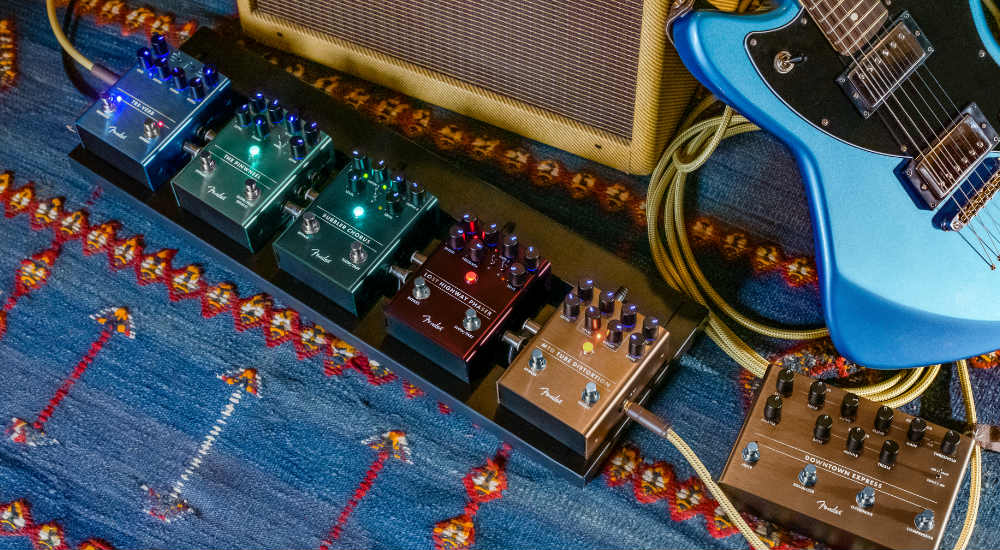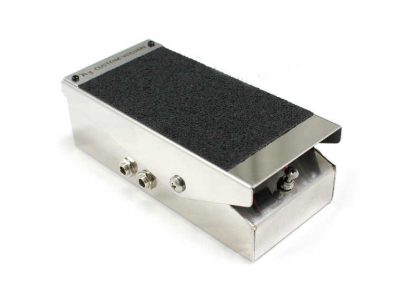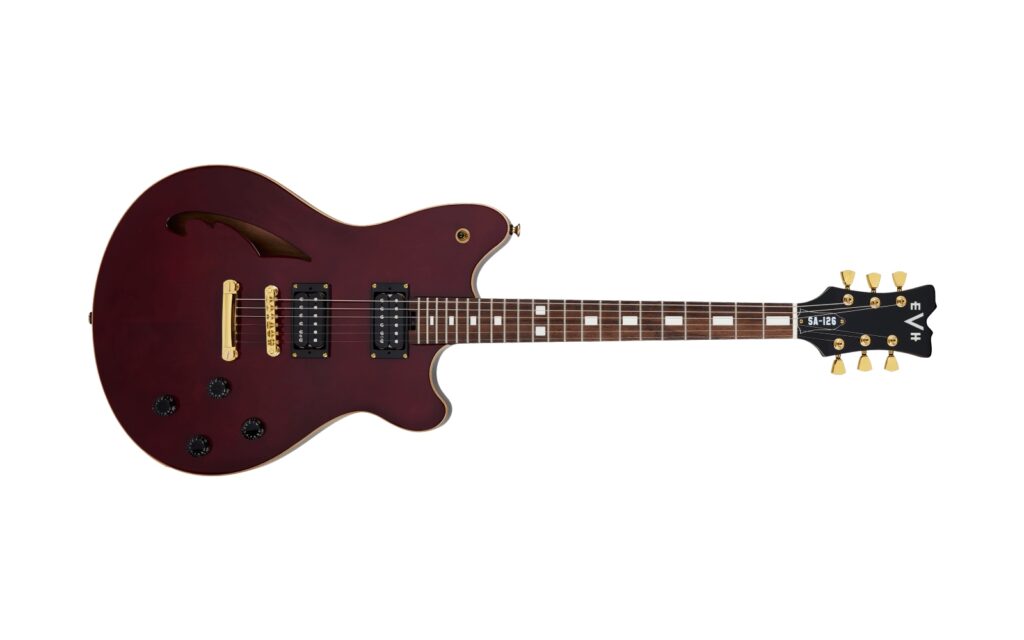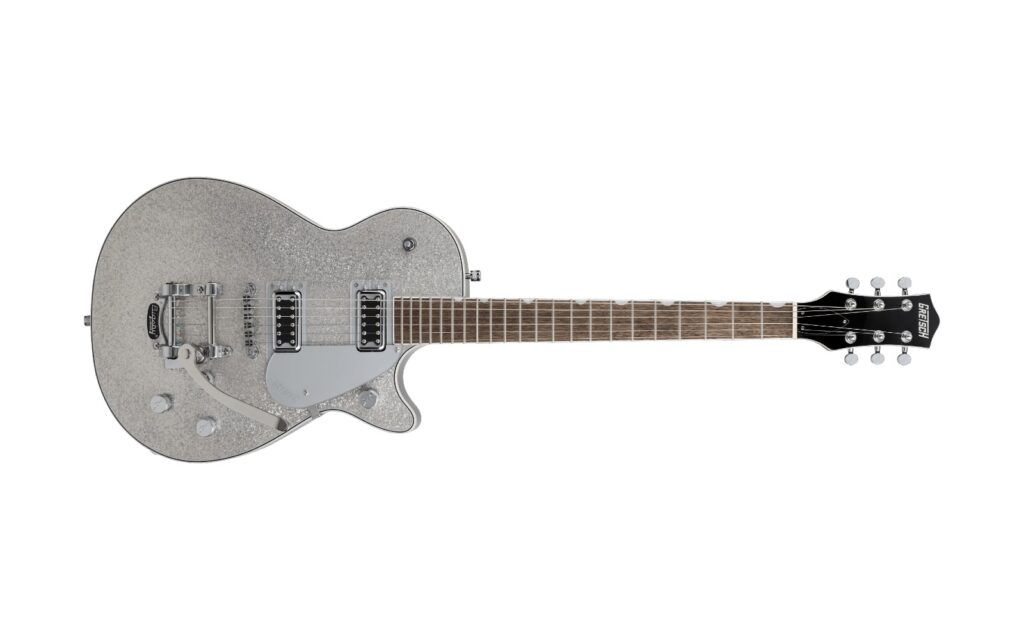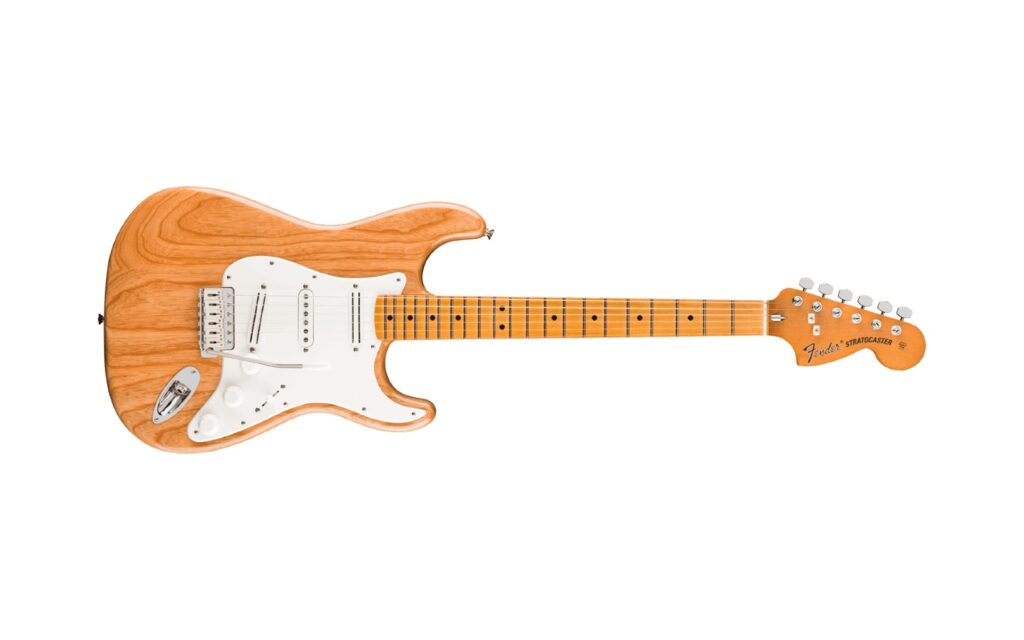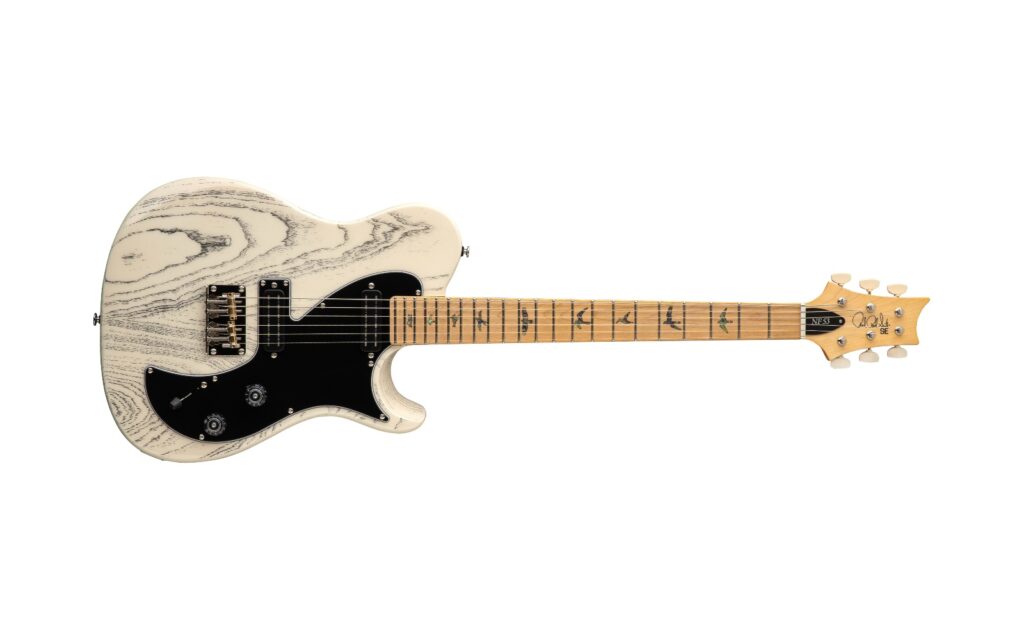However, that all looks set to change with the introduction of Fender’s newest effects range: a collection of boutique style, polished chrome pedals which have been meticulously designed by their head honchos in the US. The series features a range of gain, modulation, compression and time-based effects pedals, including the Bubbler Chorus, the Tre-Verb Tremolo/Reverb and the MTG Tube Distortion. From the designs and descriptions alone, one can assume that Fender are aiming for the big leagues, with each of the above bearing similarities to other heavy-hitting brands in the effects market. While aesthetic and sonic semblance to a competitors product isn’t always a bad thing, it does go to show that Fender aren’t exactly aiming to reinvent the wheel (or the chorus pedal for that matter) here: rather, they’re just making really good quality effects units to their pre-existing target market at a pretty reasonable price.
For example, take the Fender Tre-Verb. It’s blatantly obvious that Fender are choosing to go head-to-head with Strymon’s Flint, an incredibly similar Tremolo/Reverb combination which has won the hearts of many a guitarist in recent years. Featuring three tremolo types – Opto, Bias and Hum – and three reverbs – ’63, ’65 and Plate – as well as standard level/tone/rate/depth/dwell/blend controls. The tremolo circuit of the Tre-Verb also boasts a tap-tempo feature which can be found by holding down the bypass switch, giving you hands-free control over the rate of the effect when you’re performing.
Fender have a rich history of wiring incredible sounding reverb and tremolo circuits into their amplifiers, and the Tre-Verb acts as a testament to this, offering guitarists a wide array of sonic possibilities to alter their signal with. The Plate reverb setting offers a lush modulated texture that pairs impeccably with the Bias tremolo, while the combination of ‘63 reverb and Opto tremolo is practically surf-rock-in-a-box. The Tre-Verb’s true stereo outputs ensure that you get a huge-sounding binaural spread if you please, while a handy flick-switch at the back allows you to switch the signal path of the tremolo and reverb circuits to suit your own preferences. If you dig cavernous chords, ambient plucking and washy, modulated sound effects, the Tre-Verb’s definitely got a place on your pedalboard.
There are very few things in life that sound as warm and gooey as a good analogue chorus, and Fender are tapping into this phenom with the Bubbler Chorus. Combining vintage-sounding modulation with thoughtful modern touches, such as the ability to switch between Triangle and Sine waveforms and a dynamic Sensitivity control that interacts with your picking response, the Bubbler is by far one of the most feature packed chorus pedals I’ve come across.
Like many guitarists, I’ve definitely got a bit of a love/hate relationship with chorus effects. I firmly stand by the belief that there’s a lot more awful chorus pedals in the world than there are great ones, mainly due to its prevalence within the realms of cringey radio-rock from the ‘80s and ‘90s. Luckily, the Bubbler leans a lot further towards being grouped into the latter category, due in part to its beautiful sounding Bucket Brigade circuitry and intuitive controls. The dedicated Slow/Fast footswitch is an absolute God send, allowing for you to bounce between warbling faux-Leslie tones and a lush ‘80s shimmer with a simple boot stomp. If you’re chasing that classic Andy Summers JC-120 analogue chorus sound or a wonky, warbling Mac DeMarco-esque vibrato, the Bubbler can pull off both with absolute ease, and having the option to easily flick between the two is a very, very welcome touch.
Finally, we’ve got the Fender MTG Tube Distortion, designed in conjunction with esteemed amplifier guru Bruce Egnater. As its name suggests, the MTG utilises an actual new-old stock US made military-grade 6205 preamp tube, so instead of emulating the glorious sound of valve break-up, you’re getting the real deal. With a three band EQ, Level, Gain and Tight controls and a switchable Boost feature with independent Level and Gain knobs, you’re spoilt for choice in the tone department here. I also really dug the fact that Fender have used an actual Fender amp Jewel LED to indicate the engagement of the effect – sometimes, it’s the little things that mean the most.
Possibly due to Bruce Egnater’s brain being present throughout the design process, the MTG is one tough sounding, super-transparent distortion pedal. As expected from anything with the Fender name badge, it offers a trustworthy tone for wailing blues and crunchy funk-rock stylings, while boosting the mids and gain knobs sends you soaring into ballsy hard-rock and metal territory. However, I was a little underwhelmed by the Boost function, which functions more or less like a cascading amp due its second master volume control. I would have also liked to have been able to use the Boost function independently without engaging the Distortion circuit, but hey, you can’t win them all.
Despite their historical tendencies to disappoint with previous entries into the effects pedal market, Fender have done a pretty solid job with this selection from their newest range. With looks to kill and tones to match, the Tre-Verb, Bubbler and MTG are all incredibly well-designed and great sounding effects units that will definitely demand the attention of tone-hounds. However, with their boutique price point and stiff competition from pre-established and popular names within the pedal sector, it’ll be interesting to see just how these new units are received by the masses – I guess time will tell.
